Developing a brand is more than just a creative exercise. It’s a discipline involving research, analysis, structured management, and implementation. But the work pays off; consistent and strategic branding sets you apart and builds strong brand equity.
A brand is a system of verbal and visual frameworks and actions that create a memorable identity for your product or service.
Within this framework, your visual identity is an ecosystem of visual elements and interactions that serve to amplify your brand message and create a unique and cohesive experience for the users, no matter where they communicate with your brand.
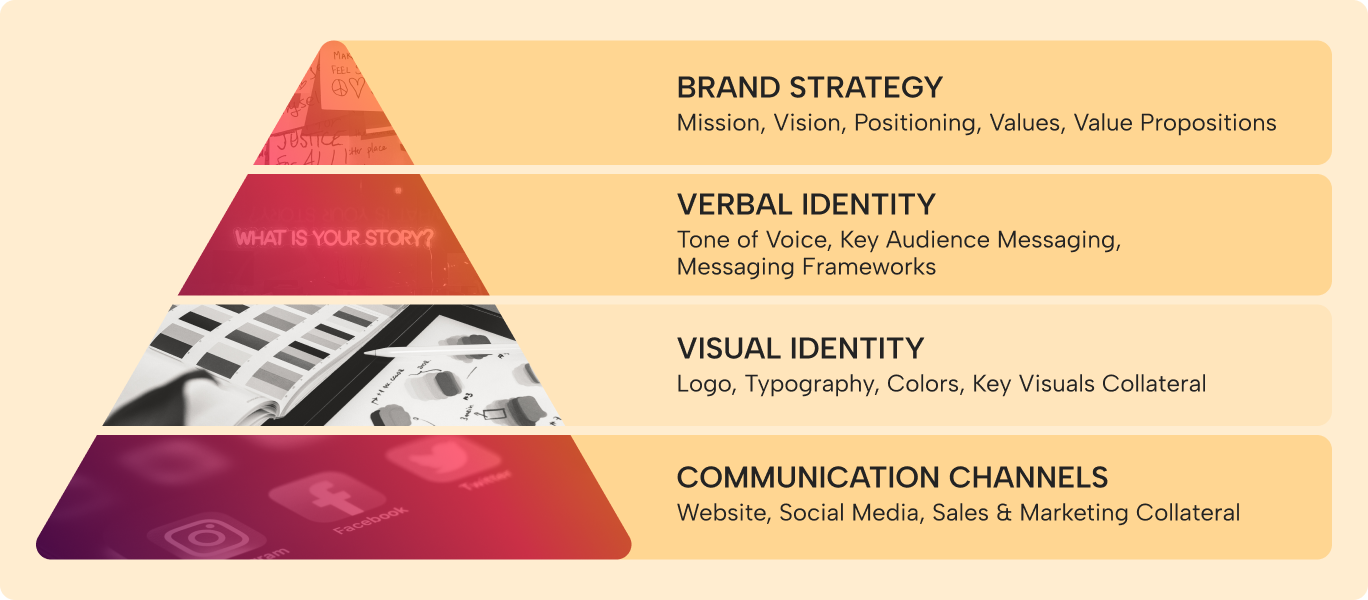
What is Visual Identity and Why Does it Matter?
While verbal identity helps create memorable messaging and communications, visual identity helps your brand achieve wide recognition by delivering visual consistency across all platforms.
Visual Identity represents the brand's ability to connect with the audience through a culmination of color, type, graphics, and visual style that also guides all future content, relationships, and ultimately growth.
Defined visual systems give you control over the way others use your brand, and ensure that the execution is always of the highest quality, reflecting your brand as they are supposed to.
Lack of visual consistency can lead to people not perceiving your company as a trustworthy, lasting partner to meet their needs.
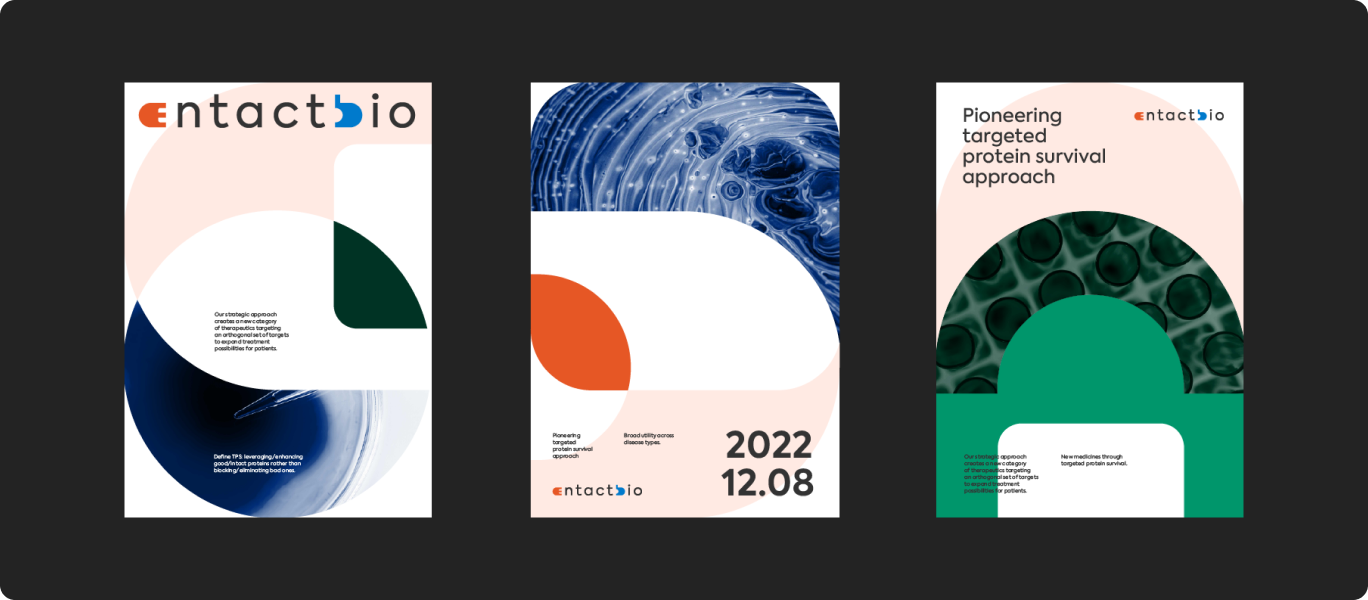

What Should be Included in Visual Identity?
Every visual identity is comprised of a set of foundational assets, which include:

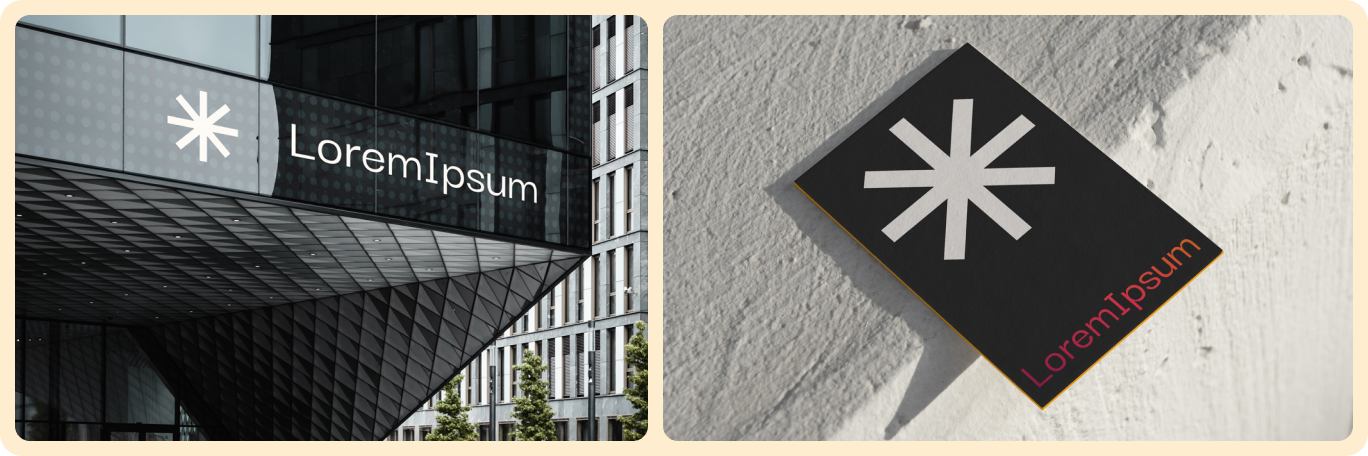
Competitive Benchmarking
Visual identity should be inspired and underpinned by your brand strategy and conscious of market insights and competitor dynamics. It should be authentic to your brand and team and ownable within your category, helping you stand out and reflect your differentiation in your sector.
The competitive benchmarking of brands in your industry is an important starting point in visual identity development. Understanding visual trends in the industry and how often they fluctuate will provide important insight into building a visual identity that will feel like it belongs to your sector yet pushes it forward.
Really assessing how the firm’s competitors are appearing within different channels helps understand the opportunities and gaps to leverage to build on the metrics you find most valuable to building your brand, metrics like brand awareness, sentiment, attributes, and associations.
Competitive benchmarking also allows you to assess what category codes help retain a connection to the company’s audience and those to avoid that make your brand seem like everyone else.
Visual Concepts
A brand concept is at the heart of every strong visual identity. It consists of a clever visual representation of core ideas behind a company's branding that brings together the underlying strategic direction with how you appear to the world. Visual concepts are built of unique insights or specific attributes or perspectives of the brand that can’t be copied or repeated by anyone else.
For example, at the heart of the visual concept for NGP Capital brand lies an idea stemming from the firm’s overarching investment thesis, the convergence of the digital and physical. A simple but innately powerful and flexible use of a square to symbolize a pixel and the digital world, and a circle to symbolize Earth and our physical world.
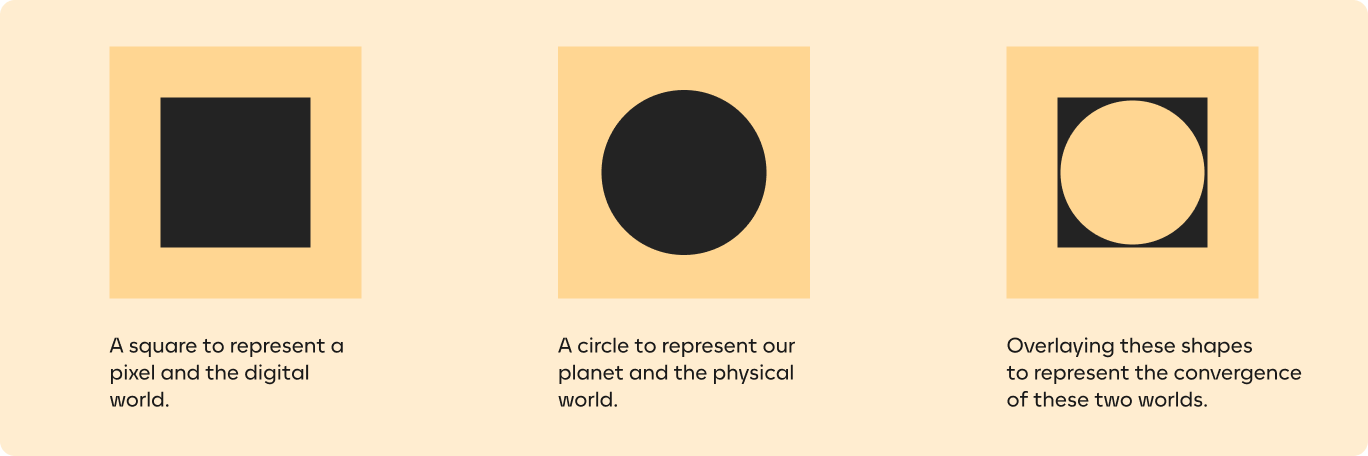
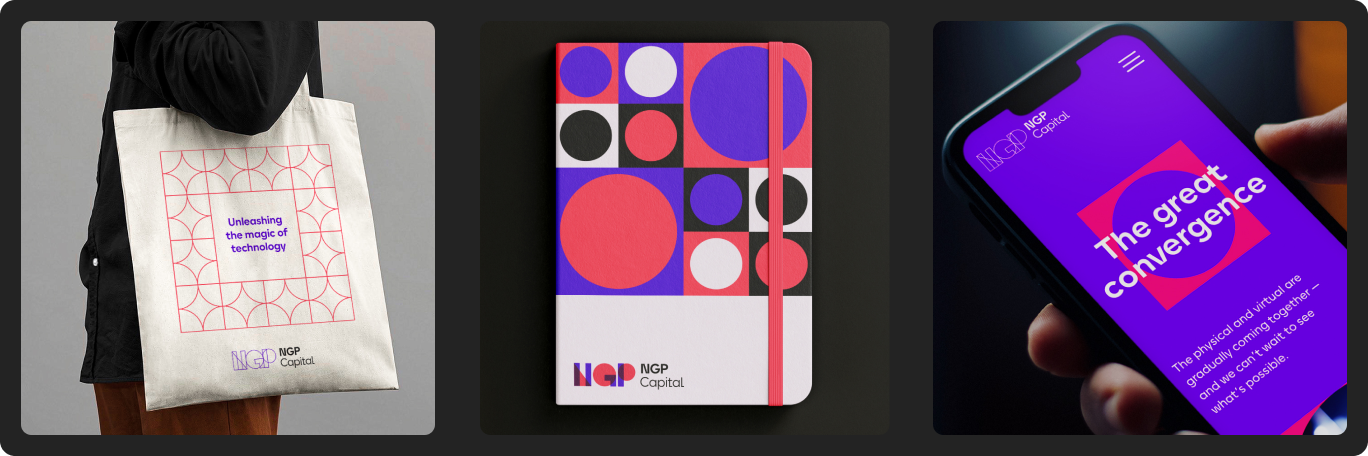
Visual identities with a strong concept at their core create a lasting impression and are easier to expand on because they already contain a strong visual logic and direction no matter what the ultimate application may be.
Brand Guidelines
Once the visual concept has been chosen and developed, brand guidelines exist to translate the rules of your brand to internal design and communications stakeholders so that they can consistently convey the brand to external audiences across all platforms.
Comprehensive brand guidelines define everything from your brand strategy and messaging to logo usage, color palette, and key visuals in some cases going as far as presentation templates, teaser videos for socials, and merchandise.
Conclusion
Verbal and visual identity is the foundation of any brand - once they are established, they will become the North Star for all of your internal and external assets and communications, from press releases to website, social media, employee swag, investor decks, and more.
Developing a brand is more than just a creative exercise. It’s a discipline involving research, analysis, structured management, and implementation. But the work pays off; consistent and strategic branding sets you apart and builds strong brand equity.
A brand is a system of verbal and visual frameworks and actions that create a memorable identity for your product or service.
Within this framework, your visual identity is an ecosystem of visual elements and interactions that serve to amplify your brand message and create a unique and cohesive experience for the users, no matter where they communicate with your brand.

What is Visual Identity and Why Does it Matter?
While verbal identity helps create memorable messaging and communications, visual identity helps your brand achieve wide recognition by delivering visual consistency across all platforms.
Visual Identity represents the brand's ability to connect with the audience through a culmination of color, type, graphics, and visual style that also guides all future content, relationships, and ultimately growth.
Defined visual systems give you control over the way others use your brand, and ensure that the execution is always of the highest quality, reflecting your brand as they are supposed to.
Lack of visual consistency can lead to people not perceiving your company as a trustworthy, lasting partner to meet their needs.


What Should be Included in Visual Identity?
Every visual identity is comprised of a set of foundational assets, which include:


Competitive Benchmarking
Visual identity should be inspired and underpinned by your brand strategy and conscious of market insights and competitor dynamics. It should be authentic to your brand and team and ownable within your category, helping you stand out and reflect your differentiation in your sector.
The competitive benchmarking of brands in your industry is an important starting point in visual identity development. Understanding visual trends in the industry and how often they fluctuate will provide important insight into building a visual identity that will feel like it belongs to your sector yet pushes it forward.
Really assessing how the firm’s competitors are appearing within different channels helps understand the opportunities and gaps to leverage to build on the metrics you find most valuable to building your brand, metrics like brand awareness, sentiment, attributes, and associations.
Competitive benchmarking also allows you to assess what category codes help retain a connection to the company’s audience and those to avoid that make your brand seem like everyone else.
Visual Concepts
A brand concept is at the heart of every strong visual identity. It consists of a clever visual representation of core ideas behind a company's branding that brings together the underlying strategic direction with how you appear to the world. Visual concepts are built of unique insights or specific attributes or perspectives of the brand that can’t be copied or repeated by anyone else.
For example, at the heart of the visual concept for NGP Capital brand lies an idea stemming from the firm’s overarching investment thesis, the convergence of the digital and physical. A simple but innately powerful and flexible use of a square to symbolize a pixel and the digital world, and a circle to symbolize Earth and our physical world.


Visual identities with a strong concept at their core create a lasting impression and are easier to expand on because they already contain a strong visual logic and direction no matter what the ultimate application may be.
Brand Guidelines
Once the visual concept has been chosen and developed, brand guidelines exist to translate the rules of your brand to internal design and communications stakeholders so that they can consistently convey the brand to external audiences across all platforms.
Comprehensive brand guidelines define everything from your brand strategy and messaging to logo usage, color palette, and key visuals in some cases going as far as presentation templates, teaser videos for socials, and merchandise.
Conclusion
Verbal and visual identity is the foundation of any brand - once they are established, they will become the North Star for all of your internal and external assets and communications, from press releases to website, social media, employee swag, investor decks, and more.



.svg)
.png)
.png)
.png)
.svg)